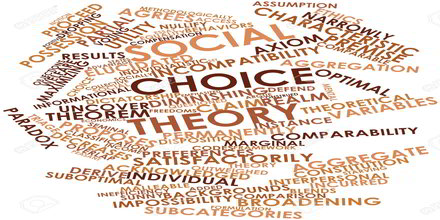Theory Of Social Choice

The theory of social choice is a fascinating and complex field of study that seeks to understand how individual preferences are aggregated to make collective decisions. At its core, social choice theory is concerned with the development of mathematical models and analytical frameworks to examine the ways in which groups of people make decisions, often with conflicting interests and preferences.
One of the founding fathers of social choice theory is Kenneth Arrow, who in 1951 published his seminal work, “Social Choice and Individual Values.” In this groundbreaking book, Arrow introduced the concept of the “impossibility theorem,” which states that it is impossible to design a social choice function that satisfies a set of reasonable criteria, including non-dictatorship, Pareto efficiency, independence of irrelevant alternatives, and universality. This theorem has had a profound impact on the development of social choice theory and has been the subject of much debate and refinement over the years.
The Challenges of Social Choice
Social choice theory is concerned with the challenges of aggregating individual preferences to make collective decisions. One of the key challenges is the problem of cycling, where a group of individuals may prefer option A to option B, option B to option C, and option C to option A, resulting in an infinite loop of preferences. This problem is often referred to as the “Condorcet paradox.”
Another challenge is the problem of strategic voting, where individuals may misrepresent their true preferences in order to influence the outcome of the decision. This can lead to manipulated results and undermine the integrity of the decision-making process.
Types of Social Choice Functions
There are several types of social choice functions, including:
- Majoritarian functions, which select the option that is preferred by the majority of individuals.
- Plurality functions, which select the option that is preferred by the largest number of individuals, even if it is not a majority.
- Borda count functions, which assign points to each option based on its ranking by each individual, and then select the option with the highest total score.
- Pairwise comparison functions, which compare each option to every other option, and then select the option that wins the most pairwise comparisons.
Each of these social choice functions has its strengths and weaknesses, and the choice of which one to use depends on the specific context and the goals of the decision-making process.
Real-World Applications
Social choice theory has a wide range of real-world applications, including:
- Elections, where social choice functions are used to aggregate individual preferences to select a winner.
- Committee decision-making, where social choice functions are used to make collective decisions.
- Resource allocation, where social choice functions are used to allocate resources among competing demands.
- Public policy, where social choice functions are used to evaluate and prioritize competing policy options.
Critiques and Challenges
Social choice theory has been subject to various critiques and challenges, including:
- Critiques of the impossibility theorem, which argue that the theorem is too pessimistic and that there are ways to design social choice functions that satisfy the desirable criteria.
- Challenges to the assumptions of individual rationality, which argue that individuals may not always act rationally and that their preferences may be influenced by a range of factors, including cognitive biases and social pressures.
- Critiques of the focus on individual preferences, which argue that social choice theory should take into account the broader social and cultural context in which decisions are made.
Future Directions
The future of social choice theory is likely to involve the development of new mathematical models and analytical frameworks that can better capture the complexities of real-world decision-making. Some potential future directions include:
- The development of more sophisticated models of individual behavior, which can take into account the cognitive biases and social pressures that influence individual preferences.
- The development of new social choice functions, which can better capture the complexities of real-world decision-making and provide more accurate and fair outcomes.
- The application of social choice theory to new areas, such as environmental decision-making and healthcare policy.
In conclusion, the theory of social choice is a complex and fascinating field of study that seeks to understand how individual preferences are aggregated to make collective decisions. While social choice theory has made significant progress in recent years, there are still many challenges and critiques that need to be addressed. By developing new mathematical models and analytical frameworks, and by applying social choice theory to new areas, researchers can help to create more accurate, fair, and effective decision-making processes.
What is the main challenge of social choice theory?
+The main challenge of social choice theory is the problem of aggregating individual preferences to make collective decisions, while taking into account the complexities of real-world decision-making and the potential for conflicting interests and preferences.
What is the impossibility theorem?
+The impossibility theorem, also known as Arrow’s theorem, states that it is impossible to design a social choice function that satisfies a set of reasonable criteria, including non-dictatorship, Pareto efficiency, independence of irrelevant alternatives, and universality.
What are some real-world applications of social choice theory?
+Social choice theory has a wide range of real-world applications, including elections, committee decision-making, resource allocation, and public policy.